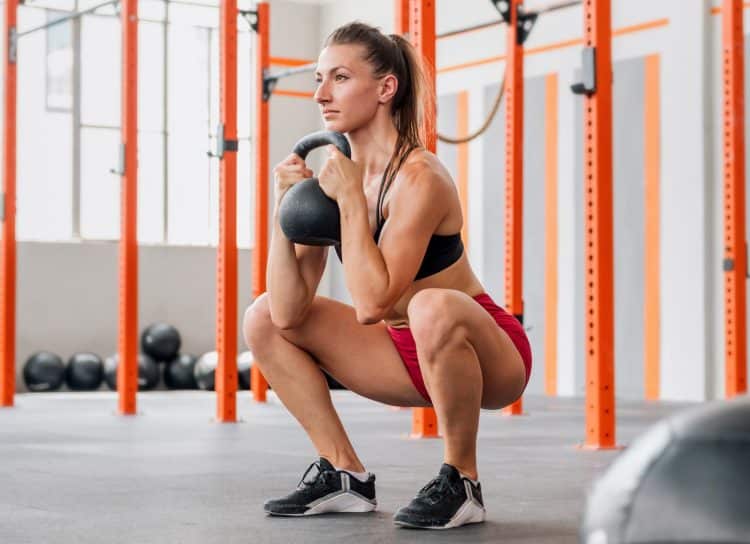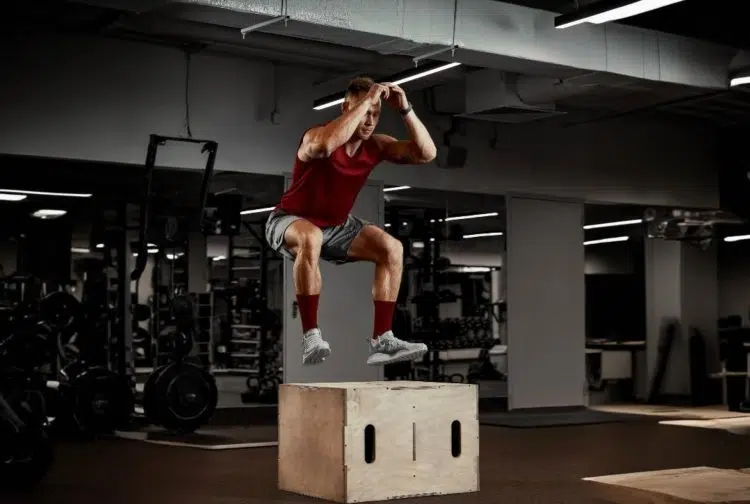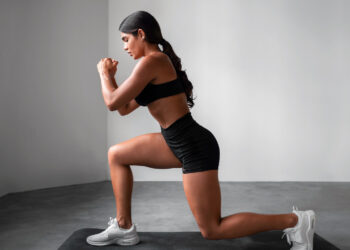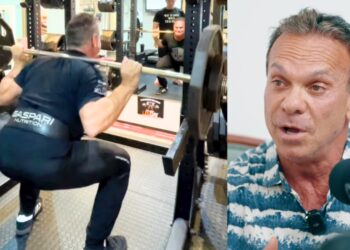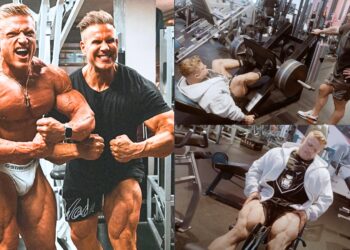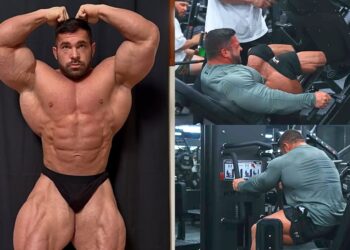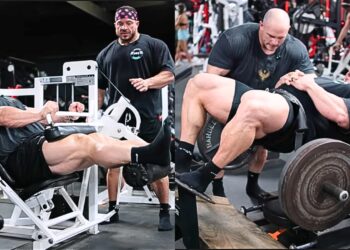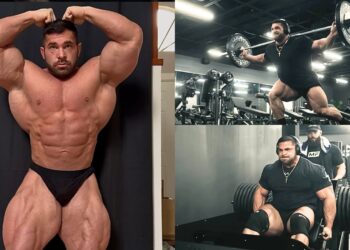How many stairs can you climb before you start feeling winded? If the answer is ‘not enough,’ it is a sign that your legs are incredibly weak.
Contrary to what most people think, leg training isn’t reserved for wannabe pro bodybuilders. As a personal trainer with over 17 years in the trenches, I can attest that building stronger legs unlocks a world of physical freedom.
The lower body is the foundation of your physique and strong legs can boost your metabolism, protect your joints, and enhance your ability to handle daily tasks. The benefits don’t end here. They can improve your posture, reduce back pain, and boost your athletic performance.
I’ve distilled all my experience into a cutting-edge 30-day leg training program that works for everyone — from complete beginners to seasoned gym-goers. The best part about this program is that it doesn’t require fancy equipment.
In this article, I pull back the curtain on how you can completely transform your legs within four weeks.
Since we only have 30 days to achieve significant growth, we’ll train our legs twice weekly to maximize target muscle stimulation and subsequent adaptations.
Level Up Your Fitness: Join our 💪 strong community in Fitness Volt Newsletter. Get daily inspiration, expert-backed workouts, nutrition tips, the latest in strength sports, and the support you need to reach your goals. Subscribe for free!
Progressive overload is the most crucial aspect of resistance training to ensure consistent progress. It involves gradually increasing the load on your body via added volume, intensity, or frequency. This will help you avoid strength, muscle, and endurance plateaus.
Without further ado, here is the 30-day training blueprint for building stronger legs:
Week 1: Building the Foundation

You’ll be doing basic strength-building exercises in the first seven days. The goal here will be to master the movement mechanics while following a picture-perfect form.
Workout A (Beginning of the Week)
Perform the first workout at the beginning of the week while you have no systematic fatigue. This will allow you to push yourself harder in each set and train to momentary muscle failure.
| Exercise | Sets | Reps | Rest Time |
| Goblet Squats | 3 | 12-15 | 90 seconds |
| Walking Lunges | 3 | 10 per leg | 60 seconds |
| Step-ups | 3 | 12 per leg | 60 seconds |
| Standing Calf Raises | 4 | 15-20 | 45 seconds |
Coach Tip: Focus on your breathing during leg workouts to squeeze the most out of each rep. For instance, inhale and hold onto your breath during the eccentrics and exhale sharply during concentrics.
Workout B (Mid Week)
Do this workout no later than Friday so you have at least two days to recover before your next session.
I highly recommend recording yourself while performing these exercises, especially during the initial phases of your lifting career. This gives you enough data to monitor your form and make the necessary adjustments.
| Exercise | Sets | Reps | Rest Time |
| Bulgarian Split Squats | 3 | 8-10 per leg | 90 seconds |
| Reverse Lunges | 3 | 10 per leg | 60 seconds |
| Box Squats | 3 | 12-15 | 90 seconds |
| Seated Calf Raises | 3 | 12-15 | 45 seconds |
Even if you are a beginner who’ll mostly be doing bodyweight exercises, don’t make the mistake of skipping a warm-up or cool-down routine.
Spend at least five to 10 minutes doing dynamic stretches like arm circles, torso twists, and leg swings to boost blood flow and prime your muscles. This can also improve your performance and significantly limit injury risk.
Similarly, perform static stretches to cool down. Holding these deep stretches can help flush out the metabolites from the muscle tissues, improve mobility, and promote blood flow. (1)
Beginners should consider getting professional help, as it can shorten their learning curve and maximize muscle stimulation, saving a lot of precious time in the long term.
Week 2: Increasing Intensity
Now that you’ve got a taste of your new training routine, it is time to push things to the next level.
We’ll be getting more technical with the workouts this week. The first session will be power-focused while the next will aim to improve your endurance and work capacity.
Workout A: Lower Body Power Focus
Be as explosive as possible while performing each rep. However, don’t compromise your form while doing so. A strong lockout and muscle contractions can help build lower body power.
| Exercise | Sets | Reps | Rest Time |
| Goblet Squats | 3 | 10-12 | 90 seconds |
| Bulgarian Split Squats | 3 | 12 per leg | 60 seconds |
| Step-Ups | 3 | 15 per leg | 60 seconds |
| Glute Bridges | 3 | 15 | 45 seconds |
| Calf Raises | 3 | 20 | 45 seconds |
Workout B: Lower Body Endurance Focus
Changing your workouts often helps keep your training routine fun and exciting. Many people give up on their fitness ambitions before achieving their objectives because they get bored and lose motivation.
| Exercise | Sets | Reps | Rest Time |
| Walking Lunges | 3 | 15 steps per leg | 90 seconds |
| Sumo Squats | 3 | 12-15 | 60 seconds |
| Romanian Deadlifts | 3 | 12 | 75 seconds |
| Hip Thrusts | 3 | 15 | 60 seconds |
| Stair Intervals | 5 | 30-sec work / 30-sec rest | N/A |
Week 3: Pushing Your Limits
Level Up Your Fitness: Join our 💪 strong community in Fitness Volt Newsletter. Get daily inspiration, expert-backed workouts, nutrition tips, the latest in strength sports, and the support you need to reach your goals. Subscribe for free!
If you followed everything to the T, chances are that you’re already feeling stronger and faster by now. We will now double down on this progress by focusing on building power and endurance in the first workout and strength and stability in the second.
Since we are increasing the overall demand on the legs, finish each session with a 20 to 30-minute low-intensity cardio session to boost your recovery.
Workout A: Power and Endurance Focus
Each individual is built differently. While some people might feel a deep muscle stretch during squats, others might not feel anything during the same exercise. This highlights the importance of trying new exercises and adding variety to your training program.
Not only does this workout incorporate a range of exercises, but it also combines two training modalities (power and endurance), ensuring you get the best bang for your training buck.
Coach Tip: Your form should remain your top priority during these exercises. Stop and reset if you feel your form slipping during a set.
| Exercise | Sets | Reps | Rest Time |
| Bulgarian Split Squats | 3 | 8-10 per leg | 90 seconds |
| Box Jumps | 3 | 8-10 | 60 seconds |
| Walking Lunges | 3 | 12 per leg | 90 seconds |
| Wall Sits | 3 | 40 seconds | 60 seconds |
| Bodyweight Calf Raises | 3 | 15-20 | 45 seconds |
Workout B: Strength and Stability Focus
The human body adapts quickly to new stimuli, but this isn’t necessarily a good thing when it comes to strength training as your body might stop responding to your exercise program.
You must adopt advanced training techniques like supersets, dropsets, and intraset stretching to push through the overhead ceiling. Changing your rep tempo by increasing the duration of the eccentric can also act as a wake-up call for your muscles.
Remember, recovery is as important as training to ensure optimal lower body gains. Feel free to delay the second workout by a day or two if you don’t feel recovered after the first workout. Also, avoid turning into a couch potato during your days off. Instead, go out for a 10 to 15-minute brisk walk or hike to promote recovery. (2)
| Exercise | Sets | Reps | Rest Time |
| Resistance Band Leg Press | 3 | 12-15 | 90 seconds |
| Step-Ups | 3 | 10 per leg | 60 seconds |
| Banded Side Walks | 3 | 15 steps in each direction | 45 seconds |
| Single-Leg Romanian Deadlifts | 3 | 8-10 per leg | 90 seconds |
| Jump Rope | 3 | 45 seconds | 30 seconds |
Week 4: Maximizing Results
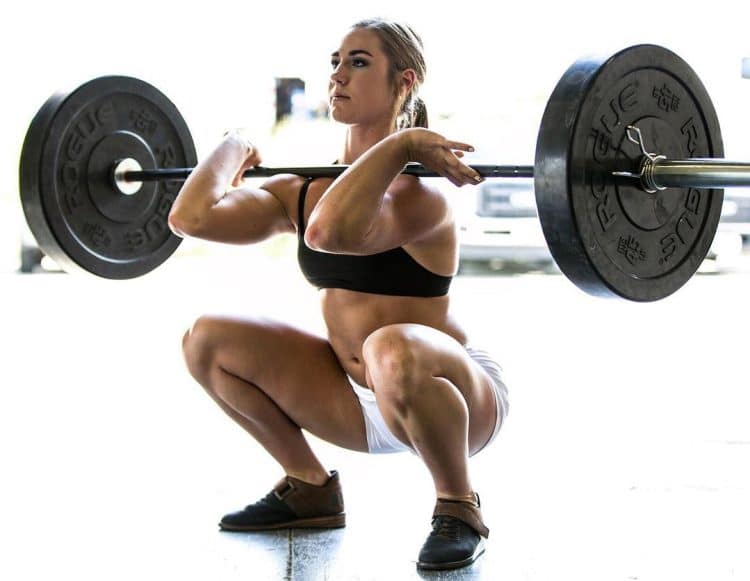
We are now entering the final week of this training program and it is time to go full-send in each workout.
But before that; step back and assess your progress before starting the final week. Are you experiencing reduced post-workout soreness? If you are nodding your head, it might be a sign that you should increase your training intensity and volume.
Workout A
Replace the front squats with conventional barbell back squats if you are not comfortable with the front rack position.
| Exercise | Sets | Reps | Rest Time |
| Front Squats | 3 | 8-10 | 90 seconds |
| Bulgarian Split Squats | 3 | 10 per leg | 75 seconds |
| Single-leg Hip Thrusts | 3 | 12 per leg | 60 seconds |
| Curtsy Lunges | 3 | 10 per leg | 60 seconds |
| Box Jumps | 3 | 8 | 45 seconds |
Workout B (Late Week)
Contract your muscles throughout the range of motion for an optimal mind-muscle contraction. This can lead to better muscle pumps, which have been shown to boost hypertrophy. (3)
| Exercise | Sets | Reps | Rest Time |
| Barbell Box Squats | 3 | 8-10 | 90 seconds |
| Walking Lunges | 3 | 12 per leg | 60 seconds |
| Romanian Deadlifts | 3 | 10-12 | 90 seconds |
| Lateral Box Step-ups | 3 | 10 per leg | 60 seconds |
| Jumping Split Squats | 3 | 8 per leg | 45 seconds |
Tips for Building Stronger Legs
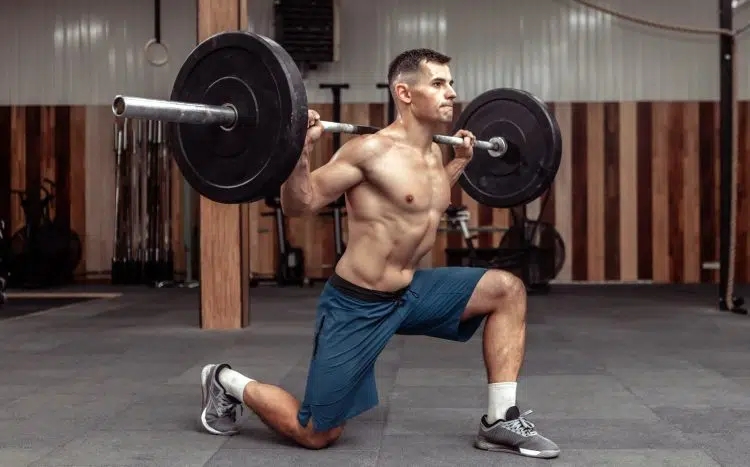
Abide by the following recommendations to supercharge your progress:
Avoid Overtraining
Doing too much too soon can be a recipe for disaster. It can increase the risk of injury and also impact your central nervous system, leading to health issues like chronic fatigue and muscle soreness, brain fog, and fever.
Feel free to skip a workout if your body is screaming for some time off. Learn to listen to your body and you’ll unlock a whole new level of progress.
Neglecting Mobility and Flexibility Work
Focusing on strength training will only take you so far. Strength and muscle in isolation are of no use. Add five to 10 minutes of mobility training to your daily fitness routine to improve your overall functionality and athletic performance. This will help improve your performance in daily tasks and reduce the risk of injury significantly.
Nutrition & Recovery
Training is only one-third of the equation when it comes to achieving the physique of your dreams. You must also ensure a balanced nutrition and recovery program.
Prioritize a protein-rich diet compromising foods like lean meats, eggs, legumes, and nuts to ensure your body has all the raw materials it needs for optimal growth. Eat a healthy dose of protein with each meal to ensure a constant supply of amino acids to your muscles.
The human body is 75 percent water, and you must drink at least a gallon of water daily to prevent the risk of dehydration.
No matter how hard you train, your muscles won’t grow bigger and stronger if you’re not resting enough. Sleep for at least eight hours each night to ensure your muscles have enough time to recover.
Conclusion
Adopting this one-month leg training-focused program will help improve your squat depth and stability, single-leg balance, overall leg strength, endurance, and confidence.
Remember, consistency, dedication, and discipline are key to achieving your training objectives. You don’t have to go full-send from the very first workout. Start small and gradually increase your training and intensity each week. The results you achieve will be mind-boggling, I promise!
If you have any questions about this lower body training program, post them in the comments below, and I’ll be happy to help!
References:
- Hirono, T., Ikezoe, T., Taniguchi, M., Tanaka, H., Saeki, J., Yagi, M., Umehara, J., & Ichihashi, N. (2022). Relationship Between Muscle Swelling and Hypertrophy Induced by Resistance Training. Journal of strength and conditioning research, 36(2), 359–364. https://doi.org/10.1519/JSC.0000000000003478

